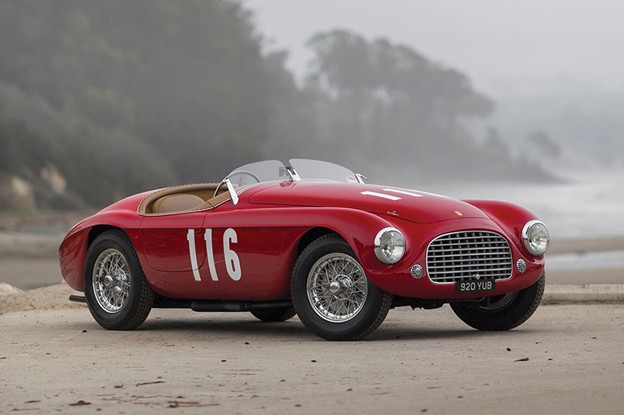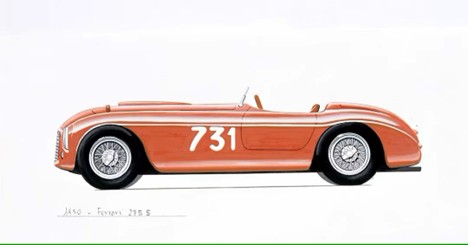The Ferrari 257 S occupies a unique and often understated position in Ferrari’s storied history. As an experimental and ultra-rare racing car developed during the mid-1950s, the 257 S exemplified Ferrari’s unrelenting pursuit of innovation and excellence. Although not as widely recognized as models like the 250 GTO or the 166 MM, the 257 S is a fascinating example of Ferrari’s engineering ingenuity and its commitment to pushing the boundaries of performance. This article explores the Ferrari 257 S in depth, examining its development, technical features, racing history, and lasting impact on Ferrari’s legacy.
Ferrari in the 1950s
By the mid-1950s, Ferrari was already a dominant force in motorsport. The marque had achieved considerable success in events like the Mille Miglia, Targa Florio, and 24 Hours of Le Mans. The Ferrari 257 S was conceived during this period of rapid innovation as a prototype aimed at further refining Ferrari’s performance in sports car racing.
The Purpose of the 257 S
The Ferrari 257 S was designed as an experimental platform to explore new ideas in chassis design, aerodynamics, and engine performance. Unlike Ferrari’s production sports cars, the 257 S was built in extremely limited numbers and intended primarily for competition use. This exclusivity has contributed to its mystique and collectability.
Chassis and Suspension
The Ferrari 257 S was constructed on a tubular steel chassis, reflecting Ferrari’s focus on rigidity and lightweight construction. This design provided a robust foundation for the car’s high-performance capabilities.
The suspension system featured:
- Independent front suspension with double wishbones and coil springs.
- A live rear axle with semi-elliptic leaf springs and hydraulic shock absorbers.
This setup was optimized for high-speed stability and cornering performance, crucial for competitive racing.
Aerodynamics and Bodywork
The 257 S was clothed in sleek, aerodynamic bodywork crafted by renowned coachbuilders such as Carrozzeria Scaglietti. The design emphasized low drag and high-speed efficiency, with features like a streamlined nose, integrated headlights, and a rounded rear deck.
The car’s body was made from lightweight aluminum, further enhancing its performance by reducing overall weight. These aerodynamic advances not only improved top speed but also provided better handling and stability at racing velocities.
The Lampredi V12 Engine
At the heart of the Ferrari 257 S was a 3.0-liter V12 engine designed by Aurelio Lampredi. Known for its larger displacement compared to the Colombo V12, the Lampredi engine delivered robust power and torque, making it ideal for endurance racing.
Key specifications of the engine included:
- Twin overhead camshafts per cylinder bank.
- Triple Weber carburetors for precise fuel delivery.
- An output of approximately 280 horsepower at 6,500 rpm.
This powerplant was paired with a four-speed manual transmission, enabling the 257 S to achieve impressive acceleration and top speeds.
Debut and Competition History
The Ferrari 257 S made its debut in the mid-1950s, competing in a variety of sports car races. Its performance on the track was a testament to Ferrari’s engineering prowess, showcasing strong speed, reliability, and handling.
Notable races where the 257 S competed include:
- The Mille Miglia: A grueling 1,000-mile endurance race through Italy, where Ferrari’s cars consistently demonstrated their dominance.
- Local Italian hill climbs and circuit races, which served as testing grounds for Ferrari’s evolving designs.
Although the 257 S did not achieve the same level of fame as some of its contemporaries, its contributions to Ferrari’s racing development were invaluable.
Driving Characteristics
Drivers who had the opportunity to pilot the 257 S praised its balanced handling, responsive steering, and powerful V12 engine. The car’s lightweight chassis and advanced suspension system allowed it to tackle corners with agility while maintaining stability at high speeds.
Influence on Future Ferrari Models
The Ferrari 257 S served as a testbed for technologies and design principles that would influence future Ferrari models. Lessons learned from the 257 S’s development and racing experience were applied to iconic cars like the 250 Testa Rossa and 250 GTO.
Collectability and Historical Significance
With only a handful of examples built, the Ferrari 257 S is among the rarest Ferraris ever produced. Its exclusivity, combined with its historical importance and performance capabilities, has made it a highly sought-after collector’s item. Examples that appear at auction command significant attention and often achieve multi-million-dollar prices.
Preservation and Restoration
Given the rarity of the Ferrari 257 S, surviving examples are meticulously preserved and restored by dedicated collectors and specialists. These cars are often showcased at prestigious events such as the Pebble Beach Concours d’Elegance and the Goodwood Festival of Speed.
A Symbol of Ferrari’s Innovation
The 257 S remains a symbol of Ferrari’s relentless pursuit of excellence. Its combination of cutting-edge engineering, bespoke design, and racing heritage embodies the core values of the Ferrari brand.
The Ferrari 257 S is a remarkable chapter in the history of one of the world’s most iconic automotive brands. As an experimental racing car, it exemplified Ferrari’s commitment to pushing the boundaries of performance and innovation. Although it may not enjoy the widespread recognition of some of its successors, the 257 S’s contributions to Ferrari’s legacy are undeniable.
Today, the Ferrari 257 S is celebrated as a rare and valuable piece of automotive history. Its story continues to inspire enthusiasts and collectors, ensuring that its legacy endures for generations to come.
Engine
Chassis
Bodywork
|


